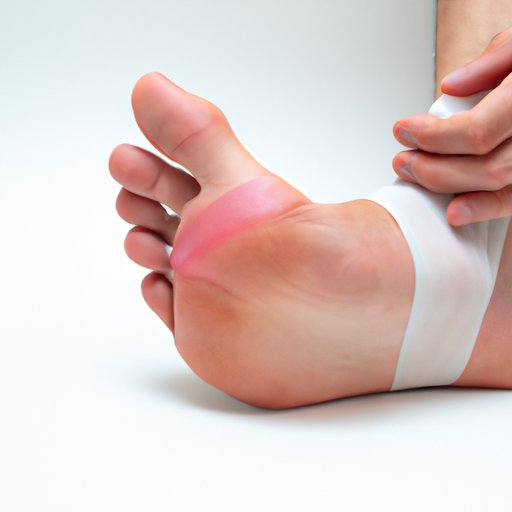
Introduction
Breaking a bone can be scary, but it’s important to know if you’ve broken your toe. In this comprehensive guide, we’ll explore the science and symptoms of broken toes, how to diagnose yourself accurately, and when it’s time to seek medical help. We’ll also give expert advice on pain management and healing, as well as steps for prevention and recovery.
Symptoms of a Broken Toe: A Guide for Accurate Self-Diagnosis
The appearance and feeling of a broken toe can vary depending on the severity of the break. If you’ve experienced trauma to your toe or foot, you might notice swelling and bruising around the toe, as well as difficulty in walking or putting pressure on the affected area.
Symptoms of a broken toe include a sudden and intense pain at the moment of impact, followed by a dull or throbbing pain that can last for days. Other symptoms include stiffness, a popping sound at the time of impact, and difficulty moving the affected toe.
To analyze your symptoms for accurate self-diagnosis, gently tug your toe and if you experience pain, it may be broken. You can also try to move the toe up and down, and side to side to see if any discomfort occurs.
The Science of Toe Injuries: Why You Might Have Broken a Bone Without Knowing It
The anatomy of toe bones and structure means that breaking a bone can occur even without realizing it. Your toes have small bones and soft tissues that can sustain damage without necessarily causing immediate pain. Common causes of toe injuries include stubbing your toe on furniture, dropping a heavy object on your foot, and sports injuries.
Types of toe injuries can range from mild to severe, including dislocations, sprains, and fractures. Severity can differ between patients, depending on the cause and nature of the injury.
Understanding the science of toe injuries can help you identify the signs of a broken toe, and this can often be done based on the symptoms that you experience.
When to Seek Medical Help for Your Injured Toe: Tips for Prompt Treatment and Recovery
It’s important to seek medical help if you experience severe pain, swelling, or certain complications, such as an open wound or unable to move the affected toe. Even if you diagnose yourself accurately, it is recommended that you consult a doctor to confirm and seek prompt medical attention.
Risks of misdiagnosis and improper treatment range widely and can lead to further complications including infections and long term toe problems.
Tips to follow for prompt treatment and recovery include rest, ice, compression, and elevation of the affected toe. Follow your doctor’s guidance on wearing a protective device such as a splint or cast, and keep the affected area clean to avoid infections.
How to Care for a Broken Toe at Home: Expert Tips on Pain Management and Healing
For first aid of a broken toe at home, clean the wound with soap and water, and apply ice to reduce swelling and discomfort. Over the counter pain medication can also help manage pain.
Pain management tips for broken toes include taking anti-inflammatory medication, such as ibuprofen, and avoiding activities that can cause further pain. Elevation of the affected leg can also help reduce swelling and pain.
Home remedies to promote healing include gentle exercises of the affected toe, soaking the affected foot in warm and epsom salt water, and applying essential oils known for their healing properties.
Prevention is Key: Simple Steps to Avoid Broken Toes and Other Common Foot Injuries
Avoiding foot injuries start with proper foot care practices, such as wearing proper shoes, keeping toenails trimmed and clean, and performing warm-up exercises prior to activities like sports. Simple steps such as mopping up spills immediately, keeping the floor clutter-free, and wearing appropriate shoes while working on construction, can help prevent accidents from happening.
Guide to keep your feet healthy and safe involves keeping the foot strong through regular exercise, stretching, and foot massage. It also includes making sure that children particularly have well-fitting shoes to support their growing feet.
Conclusion
If you suspect that you may have a broken toe, it’s important to self-diagnose accurately and to seek medical assistance promptly. The right treatment and care will help you manage the pain, reduce swelling, and prevent any long-term damage. Remember, prevention is key, and proper foot care practices can help prevent injuries from happening in the first place. Keep your feet healthy, let them take you places without worry, and avoid situations that can cause more severe injuries. Your feet will thank you.





